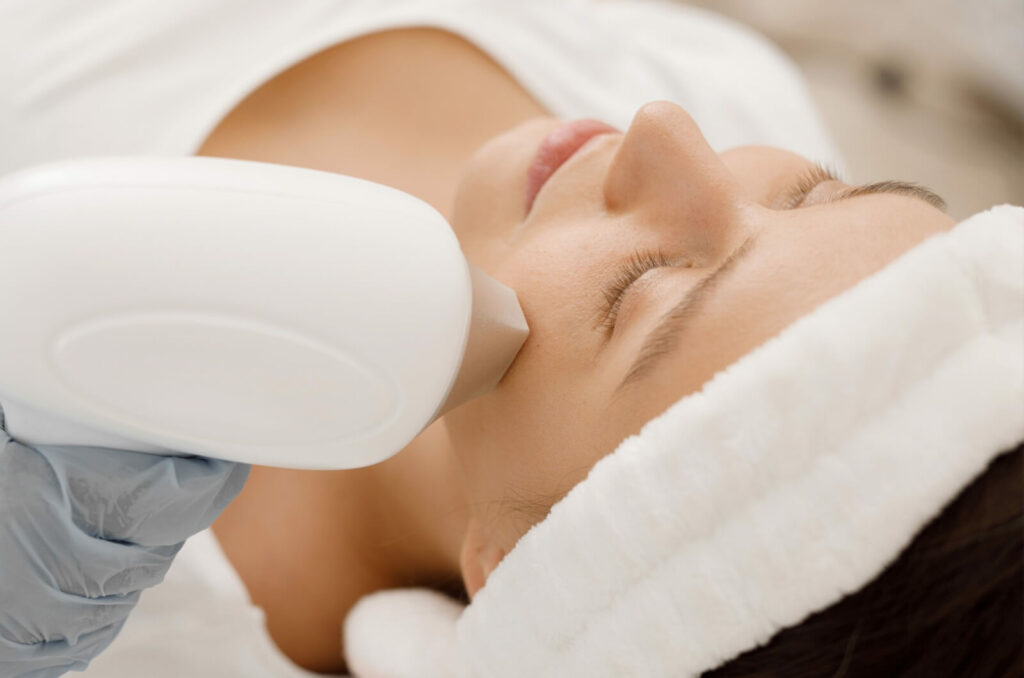One of the leading causes of dry eye is meibomian gland dysfunction (MGD), an issue that affects the oil content in your tear film. There are ways to lower your risk of developing MGD, but once it develops, untreated MGD often gets worse without proper medical diagnosis and treatment.
Since it cannot be easily treated without medical intervention, MGD can last several years, with symptoms worsening over time. At-home treatments like warm compresses and eye drops can help relieve these symptoms but may not treat the root cause of MGD. To help effectively treat MGD, your optometrist can provide in-office treatments like Intense Pulsed Light (IPL) and Low-Level Light Treatment (LLLT).
What Is Meibomian Gland Dysfunction?
MGD is a chronic eye condition in which the tiny oil glands lining the margin of the eyelids become blocked or dysfunctional. These glands secrete oils that form the lipid layer of the tear film. When these glands malfunction, the stability of the tear film is compromised, leading to increased tear evaporation, dry eyes, and irritation.
MGD is often caused by inflammation, which leads to blockage of the glands.
Other symptoms of MGD can range from mild discomfort to severe irritation, including:
- Dry, burning sensation
- Gritty sensation
- Redness in the eyes
- Blurry vision
- Swollen eyelids
Factors That Can Worsen Meibomian Gland Dysfunction
Certain behaviors and conditions can exacerbate MGD, making it essential to identify and avoid these triggers:
- Environmental Factors. Prolonged exposure to dry or windy environments can worsen MGD symptoms. Air conditioning or heating systems without adequate humidity can also contribute to dry eyes.
- Lifestyle Habits. Excessive screen time without taking breaks can strain the eyes and exacerbate MGD. Smoking and poor dietary habits can also negatively impact gland function.
- Underlying Health Conditions. Conditions like rosacea, hormonal imbalances, and autoimmune diseases can increase the risk of developing MGD. Managing these underlying health issues can help control MGD symptoms.
Will Meibomian Gland Dysfunction Ever Go Away on Its Own?
If left unaddressed, MGD is unlikely to resolve on its own and often becomes progressively worse. In some cases, untreated MGD can lead to more serious dry eye disease issues, such as chronic blepharitis, meibomianitis, meibomian gland atrophy or drop out, and even corneal damage.
Ignoring MGD can result in persistent dry eye syndrome, significantly affecting daily activities like reading, driving, and using digital devices. Chronic inflammation can also lead to scarring of the eyelid margins and permanent gland loss.
Is Meibomian Gland Damage Permanent?
Whether or not meibomian gland damage is permanent depends on the severity and duration of the dysfunction. MGD can often be managed effectively in the early stages, and the glands can return to normal function. However, if the condition is left untreated for an extended period, the glands may gradually sustain permanent damage.
To prevent loss of meibomian gland function, seeking early treatment for MGD is crucial. Regular eye exams can help detect MGD early and initiate a treatment plan before the condition worsens.
However, if you notice any symptoms of persistent dryness, burning and gritty sensations, or swollen eyelids, you should contact your eye doctor as soon as possible.
How Is Meibomian Gland Dysfunction Treated?
Managing MGD typically involves a multifaceted approach, combining lifestyle changes and medical interventions.

Warm Compresses & Lid Hygiene
Warm compresses to the eyelids can help melt the blocked oils and improve gland function. Regular lid hygiene, such as gentle scrubbing of the eyelid margins, can also prevent blockages. However, these home remedies may only provide temporary relief. Unless the root cause is addressed through medical intervention, MGD could continue to progress.
LipiFlow
For persistent MGD, meibomian gland expression is performed by a professional, using gentle massaging to release blockages in your eyelids. Although warm compresses at home may help alleviate MGD symptoms, in-office treatments like LipiFlow can gently heat your glands and loosen the blockages that have developed over time.
Once your meibomian glands are sufficiently unclogged, they can begin to produce the necessary oils to keep your tears from evaporating too quickly.
Intense Pulsed Light (IPL) Therapy
IPL treatments address the inflammation in the eyelids that causes MGD. IPL uses controlled pulses of light to:
- Increase tear break-up time
- Reduce bacteria and Demodex contributing to gland damage
- Eliminate blood vessels contributing to inflammation
IPL can also induce photobiomodulation, helping reverse MGD and restore gland function.
Low-Light Level Therapy (LLLT)
LLLT uses a wearable device to warm your meibomian glands with light. The gentle heat helps melt or loosen blockages to relieve evaporative dry eye symptoms.
Like IPL, LLLT also induces biomodulation with light to help bring your meibomian glands back to functional health.
How Long Does It Take to Cure Meibomian Gland Dysfunction?
The timeline for managing MGD varies depending on the severity of the condition. Treatment plans are customized to your specific situation.
Some patients may experience significant symptom relief within a few weeks of professional treatments. However, severe MGD may require ongoing management to maintain eye health, especially if it has damaged the glands.
Individual response to treatment, adherence to recommended therapies, and underlying health conditions can also influence recovery time.
While MGD can be managed effectively, it is important to set realistic expectations. Long-term management may involve regular maintenance treatments and lifestyle adjustments to prevent recurrence. Regular follow-ups with an eye care professional are essential for monitoring progress and adjusting treatment.
Managing Meibomian Gland Dysfunction in Connecticut
MGD is a manageable condition with the right approach. Early detection, consistent treatment, and lifestyle changes can help restore your glands to functional health.
At Higgins Brothers’ Vision Care, we understand how aggravating living with dry eye symptoms can be. Contact us today to see how we can customize a treatment plan to help you find relief.




